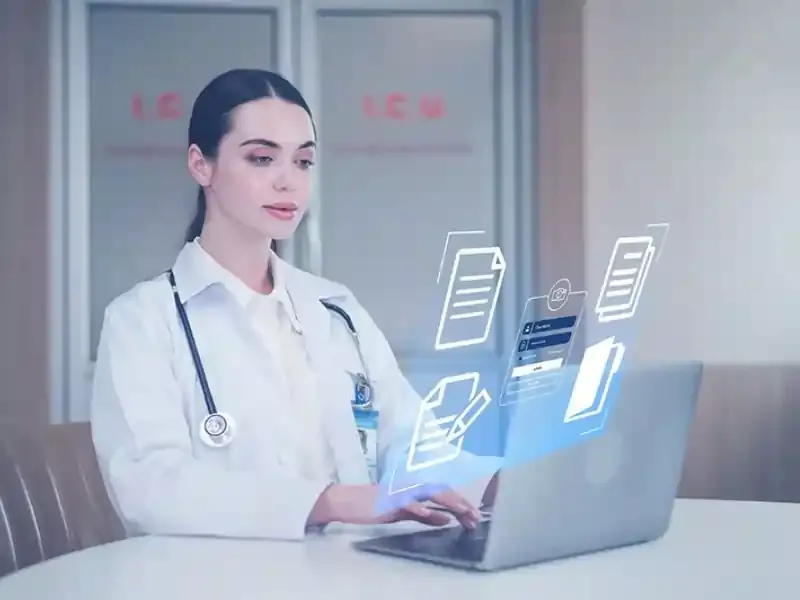Medical scribing has always played a crucial role in healthcare, acting as the bridge between patient interactions and accurate clinical documentation. Traditionally, medical scribes would manually record patient information, diagnoses, and treatment plans. However, with the rapid advancement of technology, the landscape of medical scribing is undergoing a significant transformation. Technology is not only streamlining the scribing process but also enhancing the accuracy and efficiency of clinical documentation, ultimately improving patient care.
The Evolution of Medical Scribing
Medical scribing has evolved significantly from its early days of pen-and-paper documentation. Initially, scribes were employed to ease the burden of documentation for physicians, allowing them to focus more on patient care. As the volume of healthcare data grew, the need for more efficient and accurate documentation became apparent. This demand paved the way for the introduction of digital tools, which have since revolutionized the field.
Technological Advancements in Medical Scribing
One of the most significant technological advancements in medical scribing is the integration of artificial intelligence (AI) and voice recognition software. These tools enable real-time transcription of physician-patient interactions, reducing the need for manual note-taking. AI-driven systems can also suggest medical codes, flag inconsistencies, and even generate summaries of patient visits, saving time and minimizing errors.
Another critical innovation is the use of practice management software, which offers a comprehensive solution for managing patient records, appointments, billing, and more. Such software not only supports the scribing process but also integrates seamlessly with electronic health records (EHRs), ensuring that all patient data is accurately captured and easily accessible.
check out other articles.
Benefits of Using Technology in Medical Scribing
The integration of technology in medical scribing offers numerous benefits, starting with improved accuracy. AI-powered scribing tools can identify and correct errors in real-time, reducing the risk of incorrect or incomplete documentation. This accuracy is crucial for ensuring that patients receive the correct diagnoses and treatments.
Time savings is another significant advantage. Automated scribing systems allow healthcare providers to focus more on patient care and less on documentation. This efficiency not only enhances the patient experience but also increases the overall productivity of healthcare practices.
Moreover, technology-enhanced scribing improves the accessibility and management of patient data. With practice management software, all relevant information is stored in a centralized system, making it easy for healthcare professionals to retrieve and update records as needed.
Case Studies: Success Stories of Technology-Enhanced Medical Scribing
Several healthcare practices have successfully implemented technology-driven scribing solutions, leading to notable improvements in their clinical documentation processes. For instance, clinics that have adopted AI-based scribing systems report a significant reduction in documentation errors and an increase in the speed of patient visits. These success stories highlight the potential of technology to revolutionize medical scribing.
One notable example is a multi-specialty clinic that integrated practice management software with its existing EHR system. This integration allowed for smoother data flow between different departments, reducing redundancy and improving the overall quality of patient records. The clinic also reported higher patient satisfaction, as physicians could spend more time interacting with patients and less time on administrative tasks.
Challenges and Considerations in Adopting New Technologies
Despite the clear benefits, adopting new technologies in medical scribing is not without its challenges. One of the primary concerns is the cost of implementation, particularly for smaller practices with limited budgets. Additionally, there may be a learning curve associated with using new software and systems, which could initially slow down the documentation process.
To overcome these challenges, healthcare practices should invest in comprehensive training for their staff and choose technology solutions that are scalable and user-friendly. It’s also essential to consider the long-term benefits of these technologies, which often outweigh the initial investment and learning curve.
The Future of Medical Scribing
As technology continues to advance, the future of medical scribing looks promising. Emerging technologies such as natural language processing (NLP) and machine learning are expected to further enhance the accuracy and efficiency of clinical documentation. These innovations will likely lead to more automated scribing processes, where much of the documentation is handled by AI, leaving healthcare providers free to focus entirely on patient care.
In the future, we can also expect more seamless integration between practice management software, EHRs, and scribing tools. This integration will create a unified system where all aspects of patient care and documentation are interconnected, ensuring that healthcare providers have all the information they need at their fingertips.
Conclusion
Technology is undeniably revolutionizing medical scribing and clinical documentation. With the adoption of AI, voice recognition, and practice management software, healthcare practices can achieve greater accuracy, efficiency, and overall patient care. As these technologies continue to evolve, they will play an increasingly vital role in shaping the future of healthcare, making medical scribing more effective and integral to the patient experience. Healthcare providers who embrace these advancements will be well-positioned to deliver the highest standard of care in an ever-changing medical landscape.
